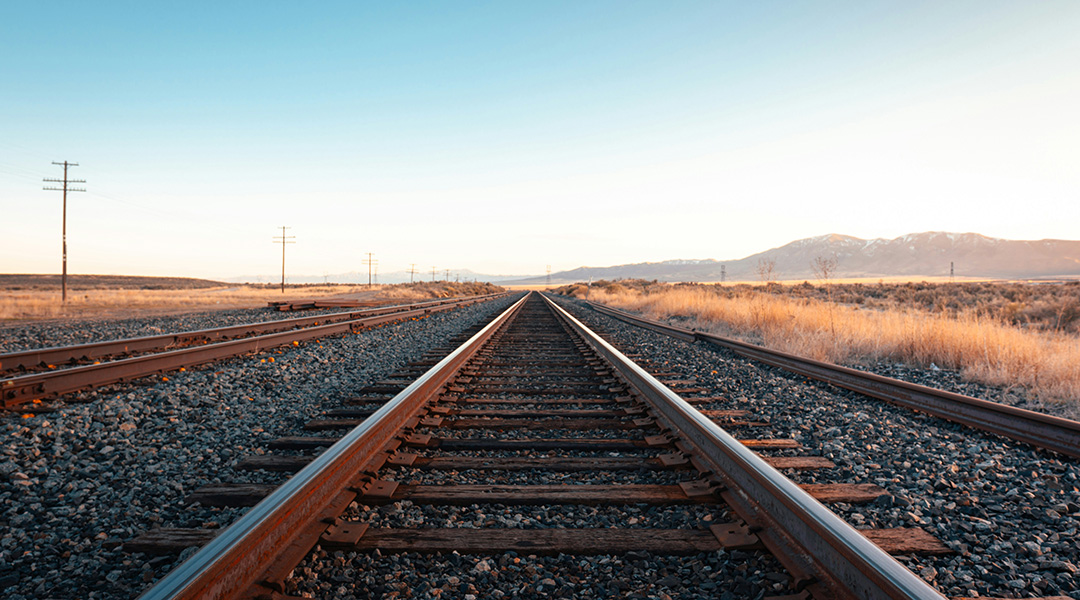The escalating frequency of extreme weather and climate events is a growing threat to transportation networks worldwide, and the impact will only get worse if greenhouse gas emissions are not immediately curbed.
This is according to a study recently published in the journal Earth’s Future, in which scientists led by Kai Liu, professor at Beijing Normal University, analyzed hundreds of climate simulations for future scenarios run by research groups all around the world to quantify how climate change will affect vital global infrastructures. The results, they say, are significant as billions of people and the entire global supply chain rely on railways and roads.
Transportation infrastructures are very sensitive to environment — extreme rainfall can cause flooding and landslides, hurricanes regularly disrupt vital supply chains in the Southeastern Unites States, and a flood in China in 2022 caused the country’s largest automaker to declare a “short-term impact on logistics” in one of their biggest factories. Another concerning and growing threat to these infrastructures is extreme heat, which can, for example, affect the integrity of rail tracks, making them prone to deformation.
“The worry is that our critical infrastructures might not be ready for frequent [extreme] weather because they were designed based on historical weather patterns,” explained Kai Liu, researcher at Beijing Normal University and one of the study’s authors. In fact, much of the world’s transportation infrastructure is decades or even centuries old, and climate change will likely make it impossible or very expensive to run and maintain.
“Our study […] gives us a global picture of varying threats related to rail and road infrastructures from climate change,” added Liu. “It is […] important to design ‘resilient’ infrastructure, which has the ability to quickly recover in the aftermath of extreme events.”
Quantifying the risk
Liu says the study was inspired by increasingly extreme weather events happening all over the world, particularly record-breaking hot summers and extremely heavy rainstorms. To determine the risk, Liu and her team used eight factors related to extreme heat and rainfall to test the robustness of the transportation grid in their simulations.
The choice of factors or indicators was made according to the weather changes caused by global warming, and which changes have more impact on infrastructures. The team also studied a special class of “compound” events. “[These] events are when different extreme weather events happen coincidently or sequentially,” said Liu. For example, when dry weather is immediately followed by torrential rain. Such events put infrastructures under a lot of stress, especially in cities, and are becoming more frequent as global temperatures rise every year.
The scientists also identified areas and infrastructures at most risk across varying types of hazards, as different parts of the world experience different levels of environmental stress. For example, equatorial regions are more sensitive to heat and rain extremes, which can cause more dangerous and a higher risk of compound events, while warmer temperatures are the main issue at cold latitudes, where infrastructures are built on permafrost that is thawing because of the heat.
Liu and her co-authors hence divided the world into areas, such as North Europe, Central America, and Southern Africa, and computed the grid exposure for each.
A glimpse of the future
The team’s predictions of the impact of extreme heat and rain, the two most common types of extreme events worldwide, on transportation networks are based on how much CO2 is emitted in the future. This is why Liu says they used different scenarios, ranging from the very optimistic, with a rapid decline in emissions and the adoption of climate adaptation strategies, to the most pessimistic, where emissions keep increasing and no adaptation is put in place. The reference they used is the period between 1950 to 2014, when a large part of the global infrastructure was designed and built, especially in developing countries.
While more emissions lead to a higher detrimental impact, the scientists provided evidence that the impact will not be the same everywhere. Around 90% of the grid will likely experience record-breaking heat by the end of this century, especially in tropical countries, Southern Europe, and the Western United States. In those regions, what are now extreme temperatures will become the new normal, with a higher probability of dangerous weather events.
Permafrost thawing will cause significant issues in colder regions, because it will make railways and roads more unstable and more incline to collapse. Compound events are the biggest precipitation-related hazard in regions like the Eastern US, Southeast Asia, and Central Africa. “We find that droughts are getting more severe in some areas and the likelihood of record-breaking short periods of extreme precipitation is also increasing,” explained Liu.
While climate-altering CO2 emissions are still increasing, they are doing so at slower rate than in the past. But this is not enough to mitigate the worst effects of climate change. More ambitious action is needed to reduce infrastructures exposure to damage, especially in regions with extensive grids, like North America and Asia.
“We encourage local communities to consider climate change’s effect [in order] to withstand new extreme [weather] conditions,” said Liu. It is a huge challenge, because identifying “hot spots” of risk in the global grid is only part of the effort.
More work needs to be done to quantify the economic risk of the outcomes of the study, taking into account the vulnerability of different railway and road systems to environmental stress in addition to better warning and forecast systems.
It is not a task beyond the ability and the ingenuity of humans, considering that we have been able to build this global infrastructure grid in the first place. Now we need to prepare it for the perilous future lying ahead.
Reference: Kai Lui, et al., Exposure of Global Rail and Road Infrastructures in Future Record-Breaking Climate Extremes, Earth’s Future (2024). DOI: 10.1029/2023EF003632
Feature image credit: Jake Weirick on Unsplash

















